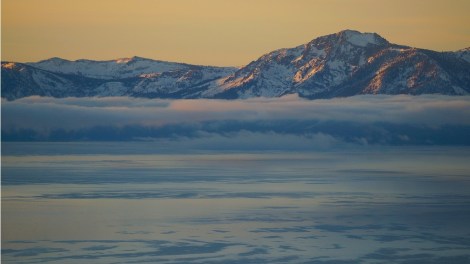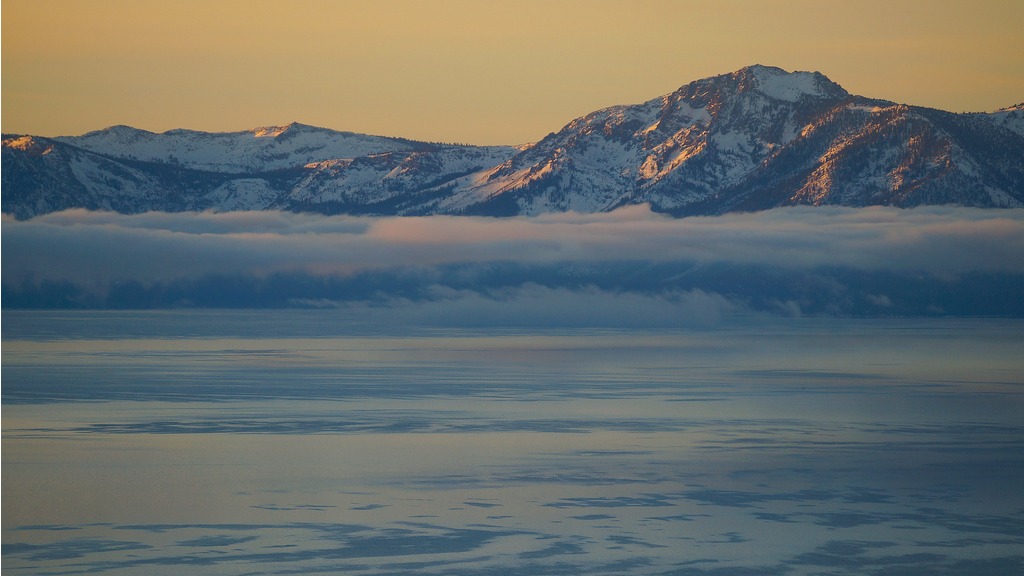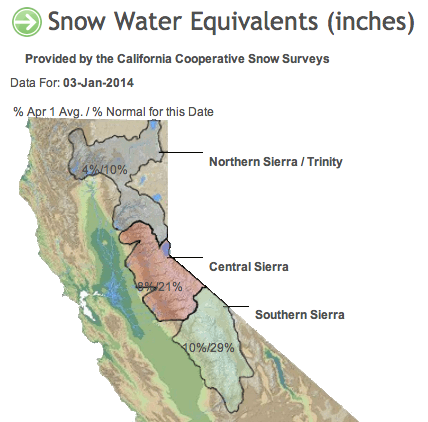
Light BrigadingLake Tahoe looked enchanting when this photo was taken last month — but there should be much more snow around it than this.
It might be hard for anybody suffering through a Midwestern blizzard to sympathize, but the Sierra Nevada mountain range in California is seriously short on snow.
That’s not just bad news for skiers and for the wintertime industry that caters to them. When the snow melts, it provides water to residents all the way west to San Francisco and south to Los Angeles. It also replenishes streams and rivers used by salmon and other wildlife. Less snow in winter means less water later in the year. (Meanwhile, L.A. just set a new record for the lowest annual rainfall on record.)
Officials measured the Sierra snowpack on Friday and found it to be storing just 19 percent of the average amount of water for this time of year. That matches a record low set at this time last year, suggesting that the region is at the beginning of a third straight year of drought.
The state is experiencing one of the driest starts to winter ever recorded, proved by the clear blue skies and record-warm temperatures that have persisted over the past few weeks. …
Even more concerning to state water providers is the forecast. On New Year’s Eve, the National Weather Service predicted that California is likely to see below-average rainfall for the entire month of January. That means the state is likely to emerge from winter with two of its wettest months essentially missing.
“The water situation is bad. We’re kind of in unprecedented conditions,” said John Woodling, executive director of the Sacramento Regional Water Authority, which represents more than two dozen water providers in the capital area. “We’re looking at a year that’s potentially going to be worse than the 1976-77 drought.”
A number of area water agencies already have ordered mandatory 20 percent reductions in water use for residential and business customers.
These are the kinds of dry, snow-deprived conditions that climatologists warn will become more common in the American West as the globe warms. And they’re the kind of conditions that water managers and fire agencies dread.




